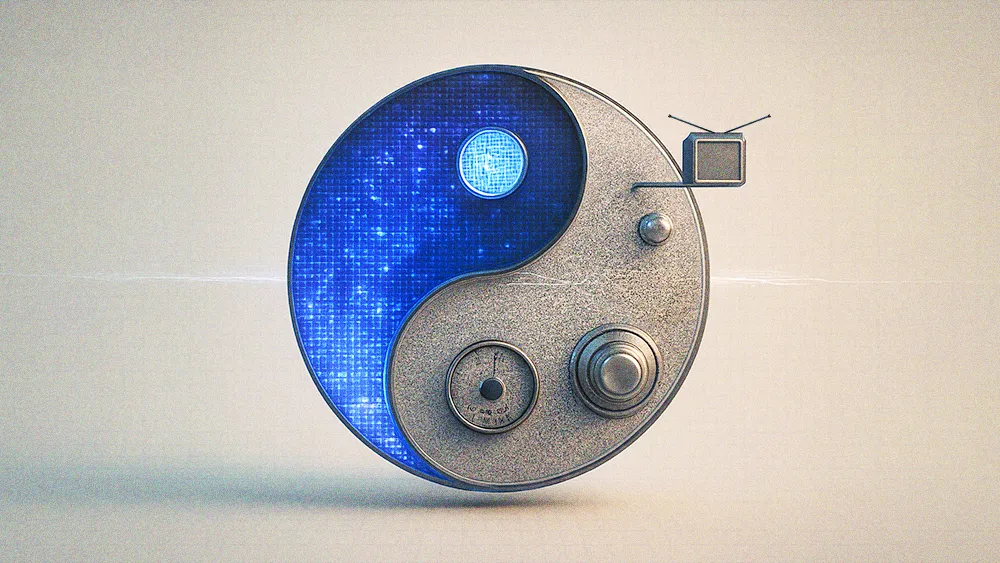The death of traditional TV advertising has been declared countless times. In the streaming era, the story goes: CTV is the targeted, data-rich, and efficient future, while linear broadcast is a relic of the past. But what if the real opportunity isn’t replacement, but reinvention? Not a funeral but a fusion, where scale and precision finally work together.
This is the reality according to Shelley Stansfield, a veteran of the advertising wars and Co-Founder of the media agency Centriply. Her firm’s data-driven approach wasn't born from the recent CTV boom; it was honed for decades in the high-stakes, hyper-targeted world of political advertising. For Stansfield, the idea that precise audience targeting is a new invention is a myth. The real innovation, she argues, is finally having the tools to combine the massive scale of traditional TV with the granular precision of digital.
"CTV is finally reaching the scale and inventory needed to match what we’ve long done with linear," Stansfield says. "So we put the two together, combining the scale of local TV and the precision of CTV. It's the data to be able to find the niche that makes them both work together."
Decades of data: Long before B2B brands started chasing niche audiences on streaming platforms, Stansfield’s team was already mastering the art on local cable. "We've been doing audience buying on linear TV, especially on the cable side, for decades," she says. "We came out of political into commercial and branding because we could find, with our technology, different small groups geographically."
This isn't just targeting a city or a state. Stansfield’s methodology allows advertisers to reach audiences with staggering granularity. For a law office looking to recruit new lawyer staffing, her team can target viewers right down to the "census block," the smallest geographical unit tracked by the U.S. government, averaging just a few hundred households.
Proving the spend: Of course, targeting is only half the battle. Proving it works is the other. Stansfield demystifies the attribution process with a surprisingly practical, privacy-compliant method that bridges the gap between a TV ad and a real-world action. The key isn't personal data, but location. "We know the billing address zip code of the CTV subscriber," she explains. "So if we know that 10 new people from zip code 90210 came in and applied to the law office, we can then match the two by both zip code, location, time and action." That location-based match creates a measurable link between ad delivery and audience response.
Beyond the screen: This TV strategy isn’t standalone; it powers a full-funnel campaign built on integration. Stansfield points to what large agencies call the “integrated department,” though she admits, “it’s not easy yet by any means.” The process involves layering data from multiple sources, pulling from foundational tools like Claritas and using insights from a LinkedIn campaign’s zip code data to guide a TV buy. The result: a way to uncover niche B2B audiences in unexpected places, like finding “pockets of CIOs in places like Las Vegas,” and reaching them across every channel.
The biggest barrier isn't technology, but silos. "So many of those functions are separated," Stansfield says. "I have my social team, I have my digital team, I have my email team." Connecting the dots often falls to tools like HubSpot, which help bridge the gaps between fractured teams.
The crucial drudgery: In a world obsessed with brilliant creative, Stansfield argues that real success depends on the unglamorous side of the business: operations. This is where teams manage the messy logistics, like the latency gap between a TV ad that “can take three days to upload” and a digital one that takes three minutes. “So few people want to do it because it’s the nitty-gritty detail, it’s the drudgery of it all,” she says. “It’s not glamorous—you’re not making the creative—but it’s so crucial. That’s operations.”
Common blind spots: When campaigns fall short, tech isn’t usually to blame. More often, it's one of two very human pitfalls. The first is personal bias, where marketers discount entire channels with the common but flawed refrain, "'Oh, nobody watches TV anymore,'"—a mindset that willfully ignores the millions of households that still make up the linear TV audience.
The second is cutting corners. Conversion tools like QR codes or digital watermarks get skipped because they’re seen as “extra work.” “A lot of people say, ‘We don’t have the manpower, we don’t have the time. We’ve got to get this up by Tuesday,’” Stansfield says. “And yes, it’s a lot of work. But it matters.”
Fax facts: The next frontier is bringing a digital mindset to the last stronghold of live, mass-audience TV: traditional broadcast sports. But unlocking that value means navigating a fractured system. Running a multi-market WNBA campaign, Stansfield notes, still “takes 27 different people to pull that off.” That’s because major broadcast groups may have scale, but they’re made up of individual stations with wildly uneven tech. “One station is advanced, another is still using faxes,” she says. It’s a logistical tangle that makes TV’s future both thrilling and overwhelming.
“Bringing together traditional and CTV is going to be both exciting and terrifying because the broadcasters have so much infrastructure,” Stansfield says. All the strategy, tech, and operational lift serve a single purpose: “It’s all about feeding the information so that an advertiser can see the impact all at once.”

